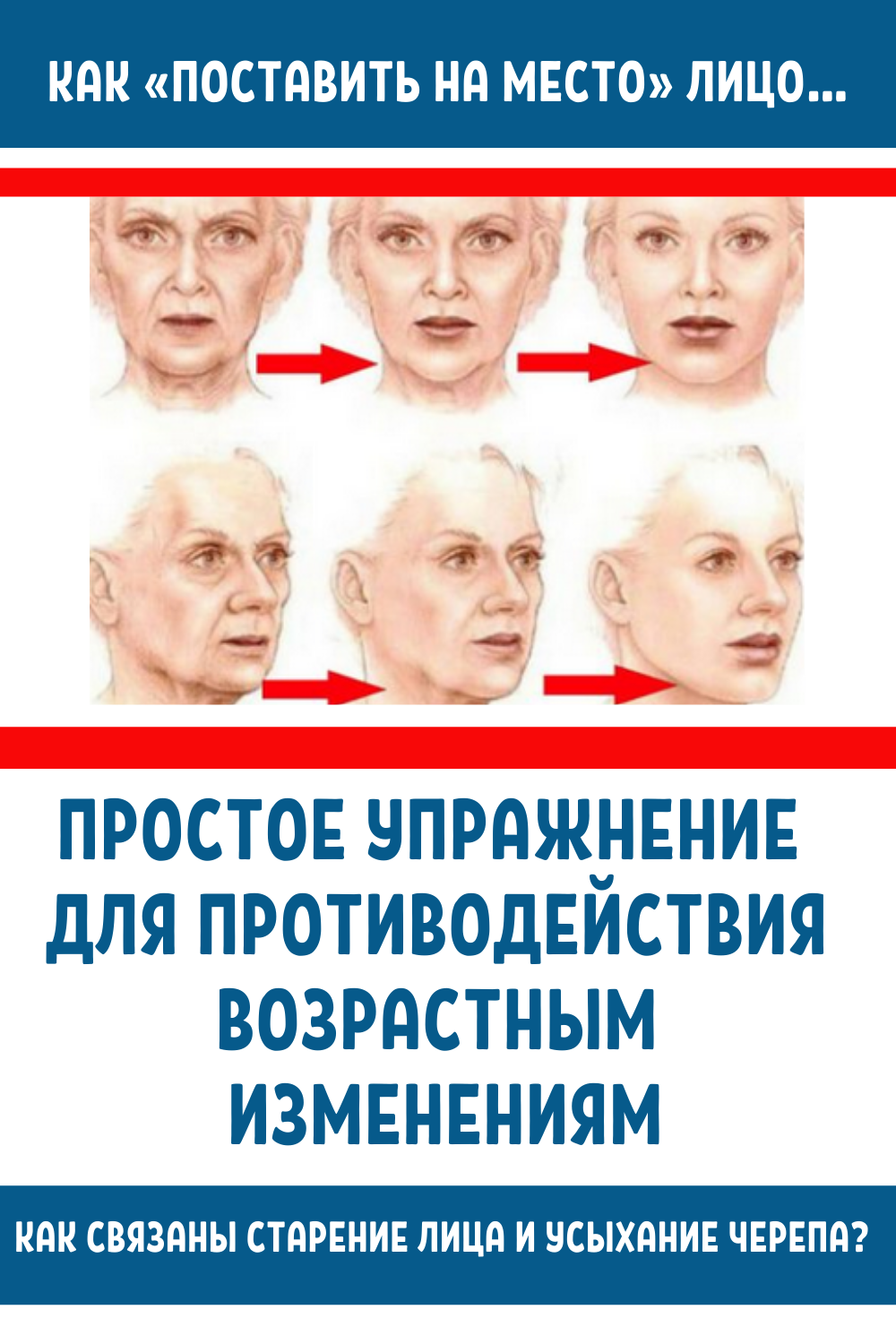In medical science, the physiological basis of body aging is associated with the drying up of the whole organism - tissues , bones , blood vessels ... including the bones of the skull. This principle is absolutely unfairly neglected by cosmetology when it explains to us the causes of facial aging.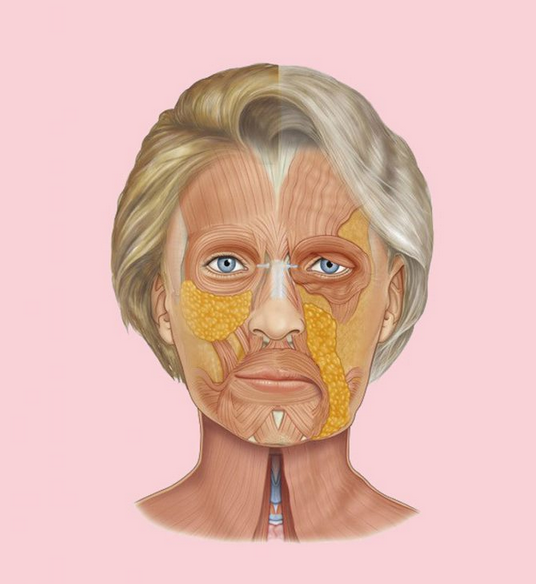 Therefore, in this article we will fill this gap in cosmetology and consider the mechanism of aging of our face from the point of view of age-related drying and deformation of the skull bones.
Therefore, in this article we will fill this gap in cosmetology and consider the mechanism of aging of our face from the point of view of age-related drying and deformation of the skull bones.
It is known that our skull consists of 29 bones , on which the entire muscular structure is stretched. That is, our skull is a solid foundation , support and frame , which determines the behavior of all structures attached to it. Like all bones in our body , the bones of the skull tend to dry out with age. Consequently , the volume of the skull itself begins to decrease.
How are facial aging and skull shrinkage related?
What to do in this case, the skin , designed to cover the original volume of the skull? In fact , the skin to the last serves us faithfully. It tends to shrink as much as possible , following the deforming skull , which , decreasing in volume , loses weight and moisture level.
Despite the fact that our skin has fantastic potential , alas, it cannot keep up with the decreasing surface area of the skull and ideally repeat the relief of deformed muscles. As a result , excess skin , unable to shrink , hangs in folds.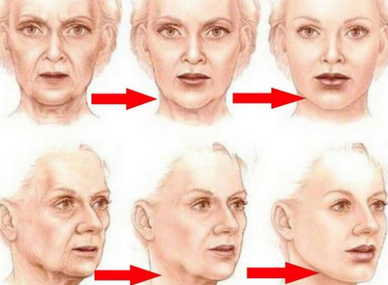
In order for the face to shine with beauty and youth , the first step is to “put in place” the anatomical structure of the bones of the skull. Speaking of this , we mean the normal physiological position of the bones , after which it is already possible to rehabilitate the muscles that form our face. And then the skin will automatically restore its tone , wrinkles will automatically smooth out , eyebrows will rise and a young outline will return to the oval of the face.
of a study conducted by American aging specialist David Kann , changes in the facial bones of a person are involved , among other things , in the appearance of wrinkles and general “sagging” of the face that appear with age
David Kahn reports that as a person ages, facial bones lose volume and decrease in size. The researcher identified aging-related changes in the bony elements of the face by examining three-dimensional images of the faces of 30 men and 30 women , who represented three age categories - 25-44 years old , 45-64 years old and over 65. Comparing the pictures of young and old people , he drew attention on significant changes in the angles of the bones of the face , which indicated a loss of volume. These changes are especially noticeable in the center of the face and around the nose. The discoveries of the scientist dispel the opinion , according to which wrinkles arise only due to a decrease in the elasticity of soft tissues.
Presenting the results of his research at a conference on plastic surgery in America , David Kahn said: “When we think about aging , we usually think that the skin becomes flabby and the amount of fat increases. Usually we just pull it all back and cut out some skin to tighten it up better. Usually, the idea of bone resorption ( resorption) does not occur to us. I think should way to combine the traditional facelift with products and procedures that add volume to the face , like fat injections.”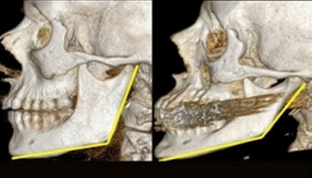
Another study by American doctors according to PhysOrg: “American doctors analyzed 120 medically indicated CT scans of people of different ages. For the study, 20 images of men and women from three age groups were selected: from 20 to 36 years old , from 41 to 64 years old and over 64 years old.
Using a computer program, scientists measured the length , width and angle of the mandible in each image and compared the results of measurements in different groups.
The results of the study: the skull of a young man ( left), the skull of an old man ( right). The yellow line indicates different angles of the jaw.
Howard Langstein , University , head of plastic and reconstructive surgery at the clinic , explained that since the lower jaw is the main part of the face , any changes in it affect the overall appearance of a person.
The results of the same studies show that with age, the size of the eye sockets increases , as well as the angle of the lower jaw ( shown in yellow). The length and height of the jaw body itself ( up to the line of growth of the teeth - the alveolar processes), on the contrary , significantly decreases , while its width changes slightly.
As a result , all these changes , together with the age-related decrease in the volume of the cranial bones , according to Langstein, “lead to a loss of the former clarity of the oval and to sagging of the soft tissues. Outwardly, this is manifested in the fact that the lower part of the face acquires softer oval outlines , , chin and neck decreases , as a result of which the outlines of the face acquire a characteristic age-related appearance.
Further, G. Langstein stated: “Although doctors have always known that bones change over time , they did not appreciate how this manifests itself with age. The predictability of age-related changes in the structure of the facial bones gives doctors an understanding of new methods for successfully restoring a youthful appearance.”
And since the lower jaw is the main bone of the facial part , any changes in it affect the overall appearance of the face.
Outwardly, this is manifested in the fact that its lower part acquires a more sluggish outline , soft tissues sag , the oval loses its clarity , the skin tone of the cheeks , chin and neck , as a result of which the outlines of the face acquire a characteristic age-related appearance. Further, G. Langstein added: “Although doctors have always known that the bones of the skull change over time , they could not fully assess how this manifests itself with age.”
Undoubtedly , the volume of the skull , as well as the work of the brain , directly depends on the work of the facial and masticatory muscles. At the same time, they must work physiologically - as they are supposed to by nature - any "pumping" of facial muscles only leads to an increase in hypertonicity - blocks that prevent the normal blood supply to the skull bones , and therefore , to their even greater resorption.
At the same time, attempts to relieve this hypertonicity with the help of botulinum toxin lead to immobility of the facial muscles. And this, in turn, leads to secondary osteoporosis , that is, osteoporosis is not age-related , but is the result of fractures and other injuries leading to temporary immobilization ( immobilization) of the limbs. Experiments on mice prove that botulinum , their bones did not restore the lost amount of calcium , even after the mice acquired motor activity. In the course of scientific experiments, a single dose of Botox was injected into mice in the region of the musculature of the knee joint in order to cause paralysis of the limb for 3-4 weeks. The mice continued to use the damaged legs to maintain balance , i.e. the pressure of body weight on the bone remained the same. After 21 days, the mass of the Botox-treated muscle was significantly reduced , in addition , signs of osteoporosis were evident. 12 weeks after the injection, the difference between the legs was still evident , which means that the osteoporosis is only partially reversible.
Even if the active work of the muscles of the body of mice is not able to fully return calcium to the bones , what can we say about the muscles of the human face!
Therefore, in those who abuse the introduction of botulinum injections into the central part of the face , the upper jaw on x-rays strikes dentists with its “leakage”, which prevents qualified assistance to their clients.
Counteracting the shortening of the jawline
Do the exercise with oil or cream. Before doing the exercise, mentally divide the jaw arch into 2 halves. Work with each half separately , fixing the fabrics in the middle.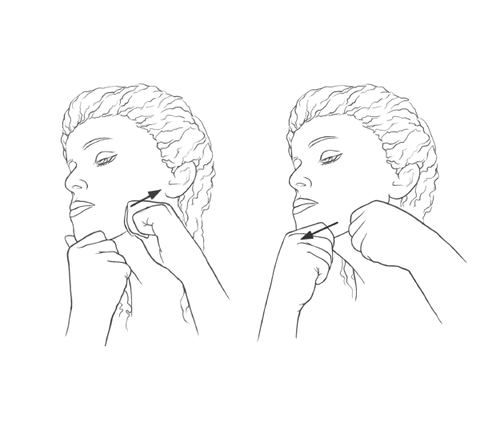
Exercise technique
1. With one hand, fix the triangular muscle ( the muscle that lowers the corner of the mouth) on the jaw arch. With two fingers of the second hand, grasp the jaw line: index finger on top , thumb - under the lower jaw. Move your hand along the jaw line along the masticatory muscle to the angle of the jaw , smoothly and slowly stretching the jaw arch.
2. Change the position of the hands. Now fix the angle of the jaw together with the masticatory muscle adjacent to it and firmly guide along the jaw line with the index finger and thumb of the other hand towards the chin. Slowly and smoothly stretch the jaw arch.
